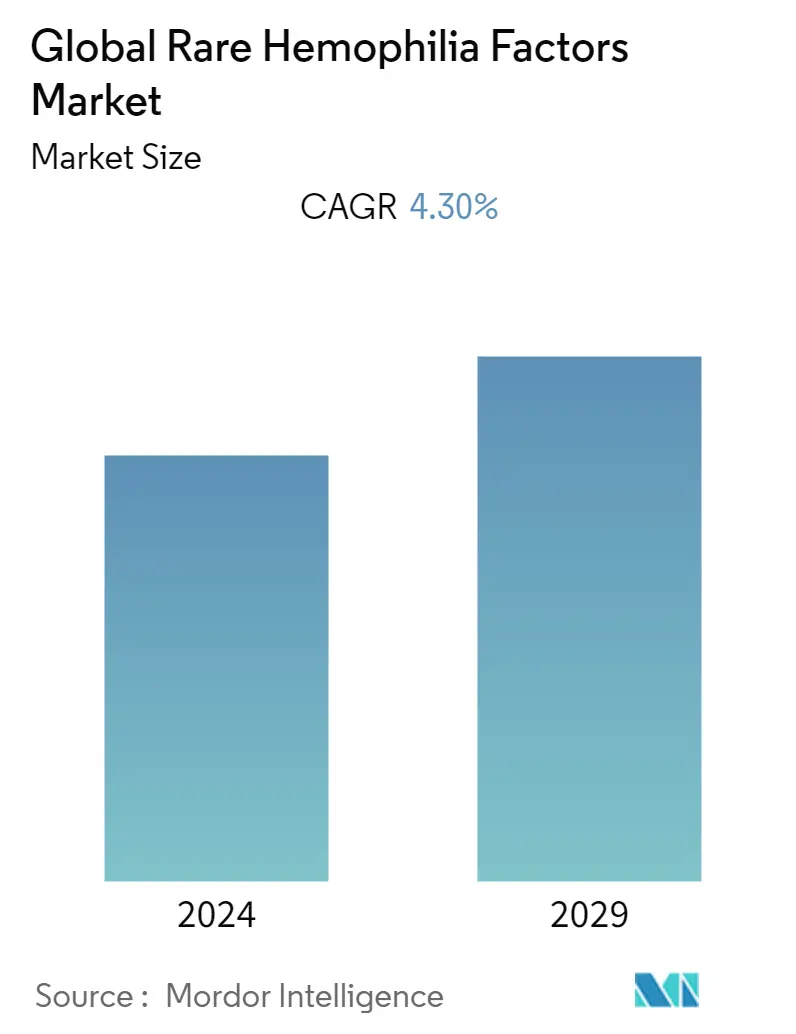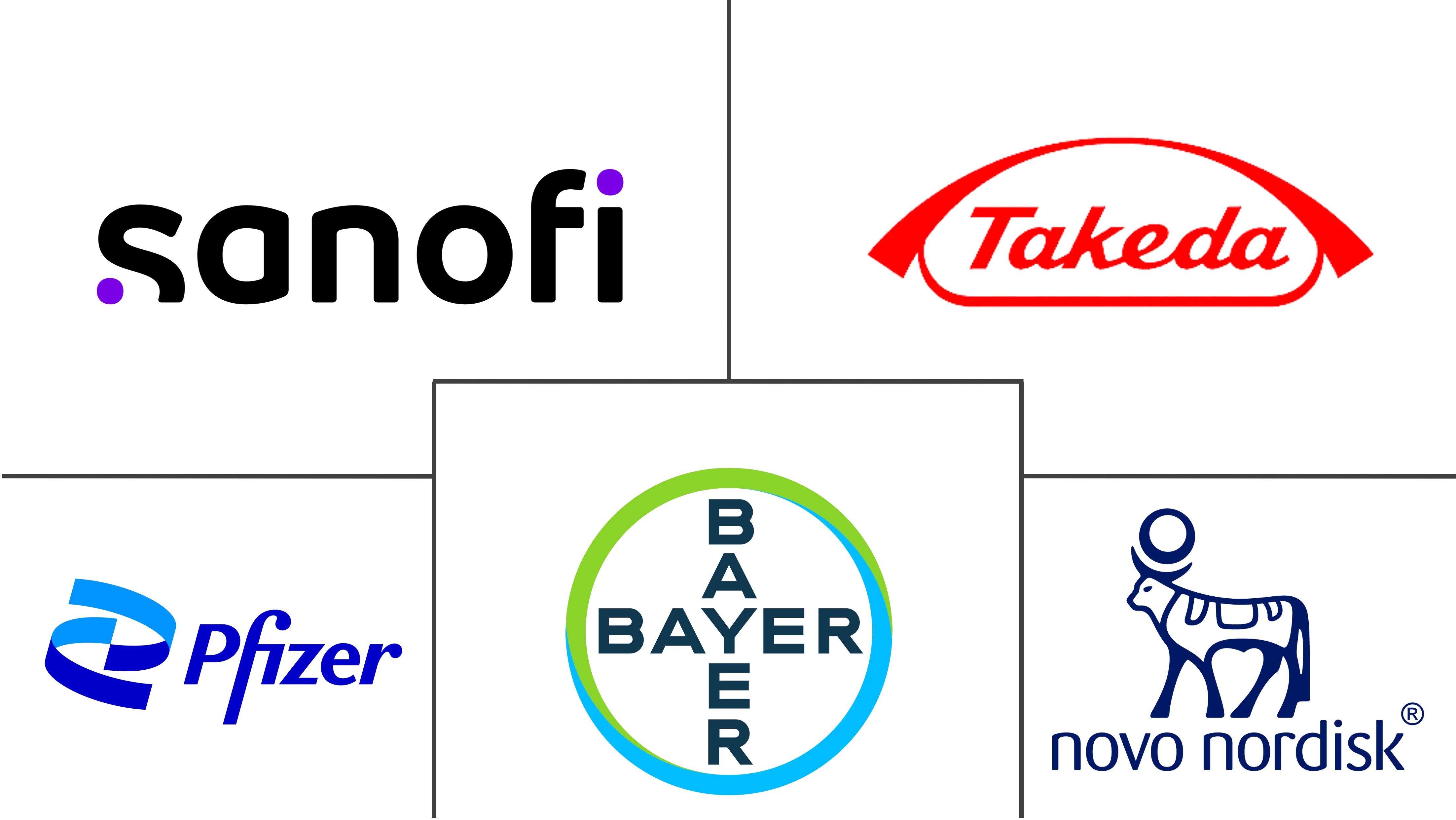Market Size of Global Rare Hemophilia Factors Industry

| Study Period | 2019 - 2029 |
| Base Year For Estimation | 2023 |
| CAGR | 4.30 % |
| Fastest Growing Market | Asia-Pacific |
| Largest Market | North America |
| Market Concentration | Low |
Major Players
*Disclaimer: Major Players sorted in no particular order |
Need a report that reflects how COVID-19 has impacted this market and its growth?
Rare Hemophilia Factors Market Analysis
The rare hemophilia factors market is expected to record a CAGR of 4.3% over the forecast period (2022-2027).
The COVID-19 outbreak notably impacted the healthcare sector. As per the article published in 2022 under the title 'Acquired Hemophilia A Developed Post COVID-19 Vaccine: An Extremely Rare Complication', eight days after receiving the first dose of the COVID-19 vaccine, an elderly man with a history of autoimmune illnesses (polymyalgia rheumatica) and hepatitis C virus experienced the development of Acquired Hemophilia A (AHA). Moreover, as per the article published in 2022 under the title 'The Mixed Effects of the First COVID-19 Lockdown on Patients With Hemophilia', the study results showed that the frequency of bleeding episodes remained unchanged or decreased in 81% of children and 78% of adults with hemophilia during the lockdown. Hence as per the factors mentioned above, COVID-19 had a significant impact on the rare hemophilia factors market.
Certain factors are driving the market growth including rising adoption and approval of new treatment techniques, a growing number of government initiatives, and funding. For instance as per the article published in 2021 under the title 'Recent Advances in the Treatment of Hemophilia: A Review', a new era of prevention and treatment of bleeding started with the introduction of a bi-specific monoclonal antibody that clones the effects of FVIII in the tenase complex, moreover other non-replacement therapies are also in development.
Similarly, according to the World Hemophilia Federation's annual global survey conducted in a period of 1999 to 2020, the number of people affected with hemophilia was 347,026 in 2020. Scientists have reported that hemophilia is three times more prevalent in men worldwide than previously thought and is still associated with a poorer life expectancy, especially in low-income countries. Therefore, the increase in hemophilia is associated with the increasing demand for the Rare Hemophilia Factors Market.
As per the aforementioned factors, the rare hemophilia factors market is likely to grow over the forecast period. However, the high cost associated with hemophilia treatment restrains the market growth.
